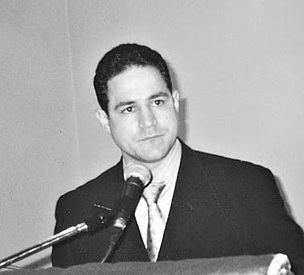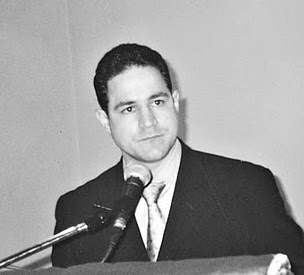 History has shown us, time and again, that revolution often occurs when authoritarian regimes take the obedience of their subjects for granted, do as they desire as they naively ignore growing discontent, only to then discover that they have pushed their populace to breaking point. History may be in the process of repeating itself in Iran.
History has shown us, time and again, that revolution often occurs when authoritarian regimes take the obedience of their subjects for granted, do as they desire as they naively ignore growing discontent, only to then discover that they have pushed their populace to breaking point. History may be in the process of repeating itself in Iran.
In scenes all too reminiscent of the popular uprisings that precipitated the collapse of the Soviet Bloc in the late-1980s — and indeed Iran’s own Revolution in 1979 — Iran last month saw a political explosion after Ahmadinejad was inconceivably declared to have won a landslide victory in June’s Presidential election.
Iran’s population — that over the years has got ever younger, more educated, and via modern technology, become all too aware of what is going on in the outside world — had until now been placated by a limited form of ‘pro- Revolutionary’ democracy. Many were discontented, even angry, but at least they felt they had a voice.
But when it becomes clear that this particular election was a mere facade designed to deliver the incumbent president back to power, it proves to be the straw that breaks the camel’s back.
As people took to the streets, as in Eastern Europe in 1989, attempts by the government to stop news and pictures reaching the people backfired, only reinforcing the view that the State was desperate to hide the truth from its own populace.
Desperate to re-establish order, the powerful Guardian Council announced a partial recount, a quite remarkable U-turn. Never in the history of the Islamic Republic has the State been forced, by the pure weight of public opinion, into making such a concession. Yet this was not enough to placate Mir Hussain Mousavi — the wronged Presidential candidate — nor the tens of thousands who had taken to the street to demonstrate for him.
Students and Footballers
Significant attention has focused on universities, the regime’s fear of their students speaking volumes about the crisis. Students were the driving force behind the Revolution 30 years ago, and are thus now being targeted by the authorities and the militias loyal to them.
Yet the mood of protest spread. In another unprecedented development, six footballers in the Iranian national team, including the captain, took to the pitch in a World Cup qualifier — televised live on Iranian state TV — wearing green armbands, Mousavi’s election campaign colour.
Such behaviour just a week earlier would have been unthinkable, but suddenly anything goes, and there seems little the regime can do about it.
Yet those hoping for a Second Iranian Revolution, with moderate forces this time sweeping away the mullahs, have of course been disappointed. For now anyway.
There is undoubtedly huge anger amongst many towards the regime, Ahmadinedjad and his extreme policies and blunt pronouncements and the dire economic situation — all brought to the boil by the fixing of the election. But this is very different to there being a nationwide mood for the overthrow of the Islamic Republic.
And the clerics and the conservatives continue to command huge levels of loyalty and support, with key political, military and theological institutions loyal to them. The regime is very well placed to defend its power.
Yet seeds of revolt may have been sown. Intimidation and a show of military and political force may have, after a tumultuous first week or so, forced many of the protestors to go home. Look closely, however, and it is patently clear that tensions remain as raw as when the crisis began.
Internal Pressure
Key figures within Iran — influential political and religious players who have enough public standing to make such stands without risking arrest — continue to publicly challenge the result and the regime, determined to ensure that the election issue cannot be swept under the proverbial carpet.
On Friday, former Iranian president, Ayatollah Ali Akbar Hashemi Rafsanjani, in a sermon at Tehran University, called for all those detained since the elections to be released, and stated that the government had lost the trust the Iranians.
So influential is Rafsanjani — he remains a key figure in the leadership hierarchy of the Islamic Republic, and chairs the powerful Expediency Discernment Council (or Expediency Council) — that his speech was broadcast live on state radio despite the nature of its content.
Rafsanjani presented a five-point plan, including the release of prisoners and media freedom. These were his personal ideas he stated, but adding that they were based on “consultation” with senior establishment figures — a clear message that when he speaks he speaks for others too.
His words immediately brought thousands of young Iranians back out onto the streets.
And today another former president of Iran, Mohammad Khatami — a reformer but also an ayatollah, and still an influential figure — has publicly called for a referendum on the election and the government. Such a referendum should be carried out by an independent body, he added.
The statement was a clear — and but the latest — challenge to the Supreme Leader, Ayatollah Ali Khamenei, as only he can call a referendum, and yet it is he who has publicly declared that the election result is fair and will stand.
And the long-serving head of Iran’s Atomic Energy Organisation, and the country’s vice-president, Gholam Reza Aghazadeh, resigned his posts July 16. He previously has had strong links with key Reformists. He was Mousavi’s deputy in the 1980s, Oil minister when Rafsanjani was president, and appointed to the atomic agency role in 1997 by Khatami — so his resignation has only added to speculation of further rifts in the leadership going on behind the scenes.
External Pressure
As events on the street of Tehran calmed, attention returned to the issue of Iran’s nuclear intentions, with a number of international actors determined to apply pressure while the Iranian regime is on the back foot.
The US administration has been keen to play a carefully balanced ‘carrot and stick’ game, offering dialogue while warning that time for talk is limited, and also outright condemning the Iranian reaction to the recent protests.
US Secretary of State Hillary Clinton stated on July 15, “Neither the president nor I have any illusions that direct dialogue with the Islamic Republic will guarantee success of any kind, and the prospects have certainly shifted in the weeks following the election … But we also understand the importance of offering to engage Iran and giving its leaders a clear choice: whether to join the international community as a responsible member, or to continue down a path to further isolation.”
But, she added, “While we remain ready to engage with Iran, but the time for action is now,” and … “the opportunity will not remain open indefinitely”.
Days earlier vice-President Joe Biden had stated that the US would not intervene if Israel were to decide that, in her national interest, she needed to take action against Iran. He, and later President Obama, were keen to stress that this did not mean a ‘green light’ had been given to Israel, but emphasised that the US is more than happy to allow Israel to make such decisions itself. These comments were clearly intended for Iranian ears.
The Israel Factor
Israel has also made a couple of carefully choreographed actions to attempt to pressure Iran, and to make it crystal clear that if Iran does not change course soon the consequences may be severe.
The most notable of them was on July 16, when it was publicly acknowledged by unnamed Israeli officials — through The Times newspaper in the UK — that two Sa’ar Five class Israeli warships passed through the Suez Canal into the Red Sea.
What was significant about the announcement was … well … the announcement!
Israel historically never comments on its military operations, and will never publicly highlight an impending surprise operation, as this would of course ensure that it would eliminate the element of surprise.
Israeli naval vessels frequently pass through the Canal, and have done so for years, without such fanfare or attention. Indeed, an Israeli admiral confirmed to The Times that the drills were “run regularly with the full cooperation of the Egyptians”. This time though, Israel wanted it known that its navy can and will move towards the waters near Iran.
The announcement, while of course showing that Israel is making sure it is ready for all options against Iran, is thus a carefully timed attempt to apply pressure on Iran, and make it clear that time is running out. It is thus a clear sign that an Israeli attack is anything but imminent.
Significant too was the Egyptian response to the announcement. Ahmed Aboul Gheit, Egypt’s Foreign Minister, said that his government explicitly allowed passage of Israeli military vessels, adding that Egypt had no issue with them so long as there was no aggressive intent against Egypt.
This of course is diplomatic speak for saying that Egypt approves of Israel using such measures to apply pressure on Iran, and that only Israel threatening Egypt — not Iran — would cause Egypt any issues!
All eyes therefore remain on Iran: the pro-democracy forces will not be kept quiet for long, and the election controversy roles on, and Israel, the US — and indeed the EU and a number of other international actors — will be making sure the pressure on Iran in regards to its nuclear programme remains too.
The former is a reality we may need to watch for a few years, but as regards the latter, time is running out — if the regime decide to keep pushing for a nuke, no matter what, Iran may have to contend with a lot more than a few prodemocracy demonstrations.











